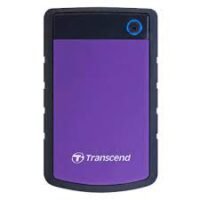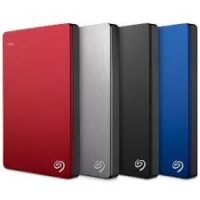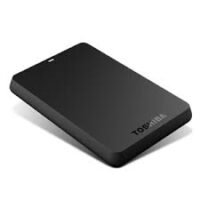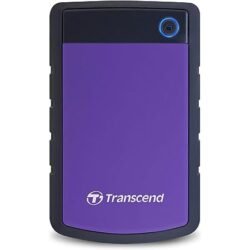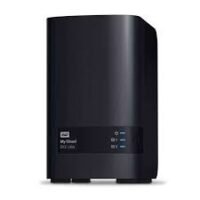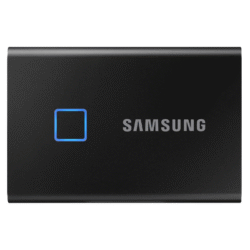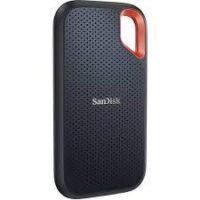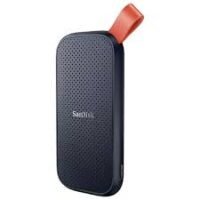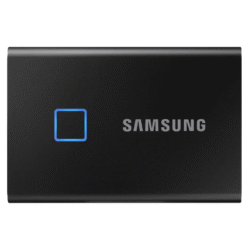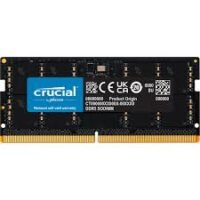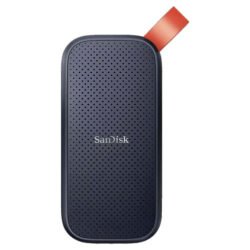
External Hard Drives- HDD, Portable SSD
There are many external hard drives on the market, and it can seem a bit overwhelming—especially if you’re not entirely sure what to look for. There are a few factors to consider to help narrow down your choice of external hard drive and find one that best suits your needs. Read on to get a better handle on what to look for:
- Portability: A big factor to consider is whether you plan on taking your external hard drive on the go or keeping it stationary. For those looking for a portable option, there are external drives that are around 3 inches in size and plug into your computer using a USB cord. These don’t need an external power outlet as they get their power from the computer they are plugged into. These external hard drives usually top out at about 2 terabytes of storage space., though, so they are not the best option for those with larger file libraries.
- Storage Capacity: If storage size is the most important factor, a stationary desktop drive might be a better option than an external hard drive as it can have 16 or more terabytes of space available. But the trade-off is that they tend to be big and bulky and require their own power source separate from your computer. That said, if you’re mainly transporting documents or pictures, a flash drive-style external hard drive with about 20GB of storage space will suffice.
- Speed: Transfer speed is a significant buying factor when you’re considering a hard drive for work purposes. A standard external hard drive will be able to process up to 10Gbps, but heavy-duty models can offer speeds of up to 40Gbps. The type of connection available to your hard drive also affects speed. For instance, thunderbolt types tend to be more speedy, while USB 2.0 connections tend to be slower.
- Data Protection: Some external hard drives are designed with encryption technology. This is a bare minimum requirement if you’re handling sensitive information such as data for work. More physical measures include hard-to-open shells and resin-dipped circuit boards.
External Hard Drives (HDD)
Transcend Hard disk
WD – 1TB – My Passport – Portable External Hard Drive – USB 3.0 – WDBYVG0010BBK-WESN – Black
External Hard disk
External Hard disk
External Hard disk
Transcend Hard disk
WD – 2TB – My Passport – Portable External Hard Drive – USB 3.0 – WDBYVG0020BBK-WESN – Black
Transcend Hard disk
Transcend Hard disk
WD 4TB My Passport Portable External Hard Drive HDD,Red – WDBPKJ0040BRD-WESN
External Solid State Hard Drives (SSD)
External SSD Drives
External SSD Drives
External SSD Drives
External SSD Drives
SanDisk E30 Portable External SSD 1TB – Black (SDSSDE30-1T00-G26)
External SSD Drives
External SSD Drives
External SSD Drives
Samsung T7 Touch Portable External SSD 1TB – Black (MU-PC1T0K/WW)
External SSD Drives
External SSD Drives
SanDisk Extreme Portable External SSD V2 1TB( SDSSDE61-1T00-G25)
External SSD Drives
External SSD Drives
External SSD Drives
SanDisk E61 Extreme Portable External SSD V2 4TB – Black (SDSSDE61-4T00-G25)
External SSD Drives
External SSD Drives
Samsung T7 Touch Portable External SSD 2TB – Black (MU-PC2T0K/WW)
External SSD Drives
SanDisk Extreme Portable External SSD V2 – 2TB – SDSSDE61-2T00-G25
External SSD Drives
SanDisk E81 Extreme Portable External SSD V2 1TB (SDSSDE81-1T00-G25)
External SSD Drives
External SSD Drives
SanDisk E30 Portable External SSD 2TB – Black (SDSSDE30-2T00-G26)
Does an external hard drive need to be plugged in all the time?
It depends on how the drive is being used. If it is being used frequently, then you can leave it plugged in. The external hard drive will enter sleep mode after a period of time with no use.
If you are using it for backup data, then make sure to keep it unplugged and unpowered when not in use in order to maintain the lifetime of the device. This also keeps your backups safe from malware and other factors that could deteriorate your data.
Can you run a computer from an external hard drive?
You can use an external hard drive to run your computer, but you will have to manually set your computer to do so. You will need to change the boot order sequence in your computer’s Basic Input/Output System to enable the system to boot to your external hard drive.





